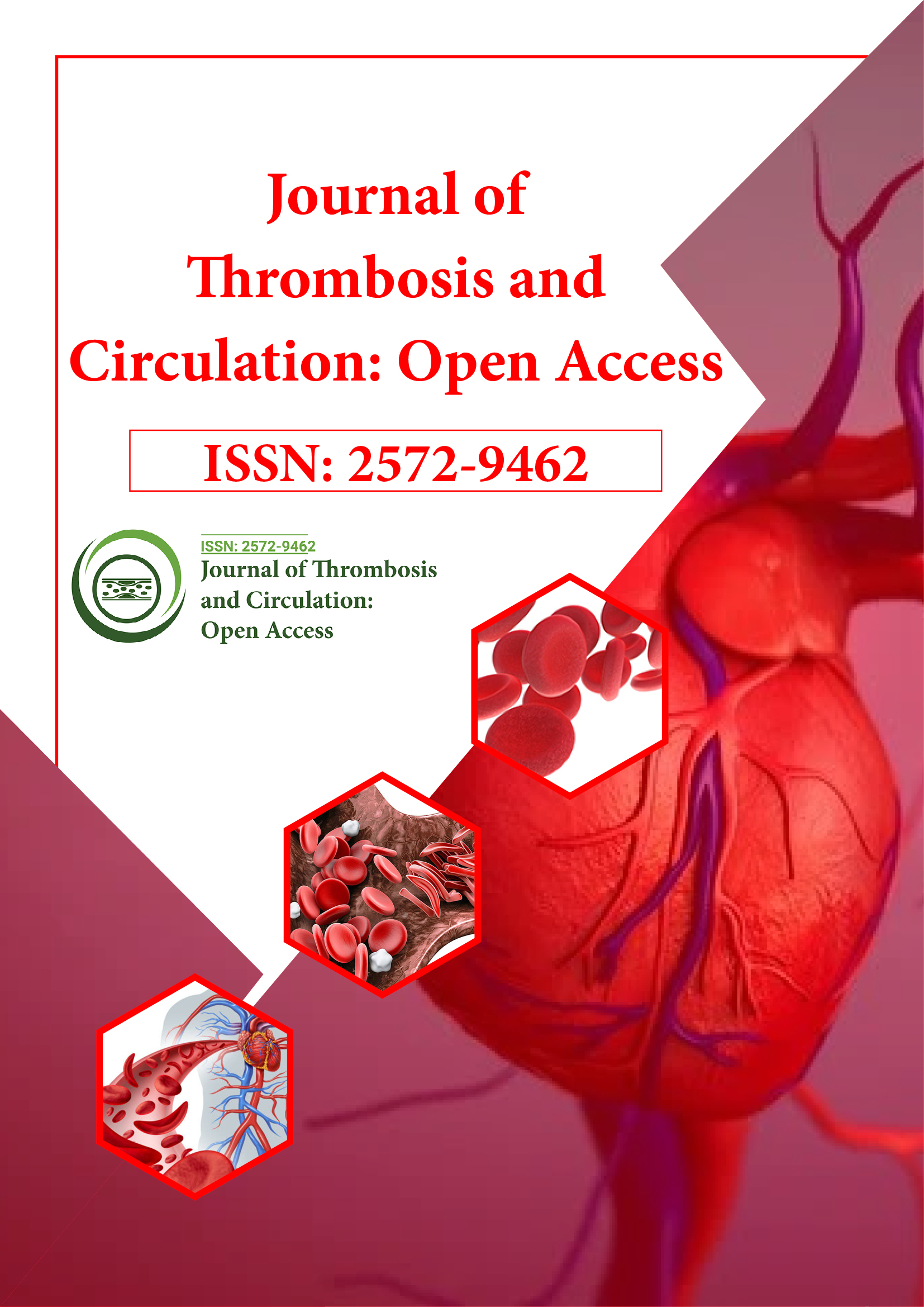Indexed In
- RefSeek
- Hamdard University
- EBSCO A-Z
- Publons
- Google Scholar
Useful Links
Share This Page
Journal Flyer

Open Access Journals
- Agri and Aquaculture
- Biochemistry
- Bioinformatics & Systems Biology
- Business & Management
- Chemistry
- Clinical Sciences
- Engineering
- Food & Nutrition
- General Science
- Genetics & Molecular Biology
- Immunology & Microbiology
- Medical Sciences
- Neuroscience & Psychology
- Nursing & Health Care
- Pharmaceutical Sciences
Perspective - (2023) Volume 9, Issue 5
Diagnosis and Treatment of Post-Thrombotic Complications in Pediatric Portal Vein Thrombosis
Koot Sari*Received: 18-Aug-2023, Manuscript No. JTCOA-23-23283; Editor assigned: 21-Aug-2023, Pre QC No. JTCOA-23-23283 (PQ); Reviewed: 06-Sep-2023, QC No. JTCOA-23-23283; Revised: 13-Sep-2023, Manuscript No. JTCOA-23-23283 (R); Published: 21-Sep-2023, DOI: 10.35248/2572-9462.23.9.242
Description
Portal Vein Thrombosis (PVT) is a rare but serious medical condition that can affect individuals of all ages, including children. When PVT occurs in pediatric patients, it can lead to a range of complications, some of which are collectively referred to as post-thrombotic complications. These complications can have a significant impact on a child's health and quality of life. In this article, we will explore the causes, diagnosis, and management of post-thrombotic complications in pediatric portal vein thrombosis.
Portal vein thrombosis is the formation of a blood clot in the portal vein, which carries blood from the digestive organs to the liver. In children, PVT can occur due to various underlying factors, including liver diseases, congenital abnormalities, and blood disorders. While PVT itself is a concerning condition, the post-thrombotic complications that may develop afterward pose additional challenges for pediatric patients.
Post-thrombotic complications
Portal hypertension: One of the most significant postthrombotic complications in pediatric PVT is portal hypertension. The clot can obstruct blood flow through the portal vein, leading to increased pressure within the portal system. This can result in various symptoms, such as abdominal pain, ascites (accumulation of fluid in the abdomen), and gastrointestinal bleeding.
Variceal formation: Portal hypertension can cause the development of varices, which are dilated blood vessels in the oesophagus, stomach, or other parts of the digestive tract. These varices are fragile and prone to bleeding, which can be lifethreatening if not managed promptly. Children with PVT require close monitoring to detect and treat varices early.
Impaired liver function: PVT can accord liver function over time, as reduced blood flow to the liver can lead to liver damage. This can manifest as jaundice, fatigue, and impaired growth and development in pediatric patients.
Recurrent thrombosis: Some children with PVT may experience recurrent thrombosis, which can further exacerbate the condition and increase the risk of post-thrombotic complications. Identifying and managing the underlying causes of PVT is crucial to preventing recurrence.
Diagnosis
Diagnosing pediatric PVT and its post-thrombotic complications typically involves a combination of medical history, physical examination, and diagnostic tests. Imaging studies such as Doppler ultrasound, CT scans, or MRI are often used to visualize the clot and assess the extent of damage to the portal vein and surrounding structures. Additionally, endoscopy may be performed to identify varices and assess the risk of bleeding.
Management and treatment
The management of pediatric portal vein thrombosis and its postthrombotic complications requires a multidisciplinary approach involving pediatricians, gastroenterologists, hematologists, and other specialists. Treatment strategies may include:
Anticoagulation: In many cases, pediatric PVT is managed with anticoagulant medications to prevent the clot from growing larger and to reduce the risk of recurrence.
Portal hypertension management: Children with portal hypertension may require medications, such as beta-blockers, to lower blood pressure in the portal vein system and reduce the risk of bleeding from varices. In severe cases, procedures like Transjugular Intrahepatic Portosystemic Shunt (TIPS) may be considered.
Endoscopic therapy: Endoscopic procedures can be used to treat varices and prevent bleeding. Techniques like variceal band ligation or sclerotherapy can be employed to control bleeding and reduce the risk of complications.
Addressing underlying causes: Identifying and treating underlying conditions contributing to PVT, such as liver disease or blood disorders, is essential to prevent recurrence.
Nutritional support: Children with PVT may require specialized nutritional support to maintain adequate growth and development, especially if liver function is reduced.
Pediatric portal vein thrombosis is a complex and challenging condition that can lead to post-thrombotic complications, including portal hypertension, variceal formation, and impaired liver function. Early diagnosis and a comprehensive, multidisciplinary approach to treatment are crucial in managing this condition and minimizing the risk of long-term complications in pediatric patients. Close monitoring, timely intervention, and addressing underlying causes are key to improving the prognosis and quality of life for children affected by PVT.
Citation: Sari K (2023) Diagnosis and Treatment of Post-Thrombotic Complications in Pediatric Portal Vein Thrombosis. J Thrombo Cir. 9:242.
Copyright: © 2023 Sari K. This is an open-access article distributed under the terms of the Creative Commons Attribution License, which permits unrestricted use, distribution, and reproduction in any medium, provided the original author and source are credited.
